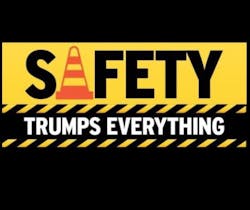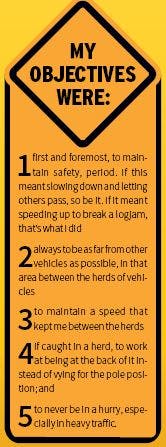Over the past few months, there’s been a common thread running through the Business of Trucking columns. I’ve discussed the importance of sleep—not just in the context of how it affects driving but for your overall health—and how crumbling highways and bridges aren’t just an economic disaster on the horizon but a highway safety catastrophe. In other columns, the discussion has covered electronic logging devices and the upcoming mandate. Speed limiters are also on the horizon, along with a change in training procedures for entry-level truckers. Add to this the possibility of opening OTR Interstate driving to 18- to 20-year-olds.
So, have you picked out the common thread in all of these discussions? Highway safety.
The reasons for this are many: some economic and some very personal due to a highway-related tragedy. But in the final analysis, trucks and highway safety go hand-in-hand.
Recently, I’ve read or heard news stories of truckers directing road rage at other motorists. And while the stress and frustration of dealing with the driving public as a trucker has been constant, it’s imperative truckers always take the high road when it comes to safely maneuvering 40 tons around other motorists.
The question is not who’s right and who’s wrong in any highway situation. It’s about what action will create the safest driving environment for all.
In 2012, according to the National Highway Traffic Safety Administration (NHTSA), there was a 4% increase over 2011 in fatalities involving commercial trucks. Large trucks accounted for 4% of all registered vehicles and 9% of total vehicle-miles traveled. Yet these large trucks accounted for 8% of all vehicles involved in fatal crashes and 3% of all vehicles involved in injury and property-damage-only crashes.
In 81% of fatal crashes involving a large truck, there was at least one additional vehicle involved. Conversely, in fatal crashes involving passenger vehicles, an additional vehicle was involved only 58% of the time.
In 46% of the two-vehicle fatal crashes, both the large truck and the other vehicle were proceeding in a straight line at the time of the crash. In 9% of the crashes, the other vehicle was turning. In 12%, one of the vehicles was negotiating a curve. In 7% of fatal crashes, either the truck or the other vehicle was stopped or parked in a traffic lane (5% and 2%, respectively). In 31% of the two-vehicle fatal crashes involving a large truck and another type of vehicle, both vehicles were struck in the front. The truck was struck in the rear more than three times as often as the other vehicle (20% compared to 6%).
What do these numbers mean? First, it needs to be noted that nearly 80% of all commercial truck/light passenger vehicle accidents are the fault of the other driver, not the trucker.
Again, this is not just about obeying the traffic laws; it comes down to how the trucker can avoid placing himself or herself in a situation where safety is compromised. Truckers aren’t required to teach other drivers how to be safe, but it is up to us to demonstrate through our daily driving actions how safety is accomplished. We lead by example.
During a quarter-century plus on the road, I’ve learned that courtesy isn’t something I can teach other drivers from the cab of a truck. The only thing I could do from my cab was to protect myself, my truck, my freight and those traveling around me by being vigilant as to what was going on. I was constantly looking for that alternate safe direction to take when another driver made a mistake, got aggressive or wasn’t paying attention.
Generally, I went with the flow but kept as much distance between my truck and other vehicles as possible, even if it meant backing off.
The number-one responsibility of the professional truck driver must always be safety, and that means every trucker contributes to the safety of all who travel around him or her.
This approach has served me well, as I have over 30 years of being a commercial trucker with no accidents or tickets. And I’ve never missed an appointment for a pickup or a delivery by taking the time necessary to operate safely.
Life is way too short, and to be in an accident in which a life is lost is not something any of us needs to experience and then have to live with.
Safety trumps everything.

